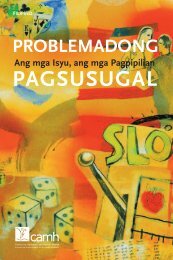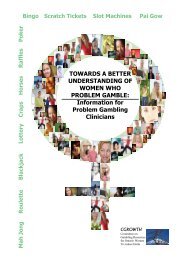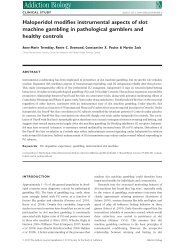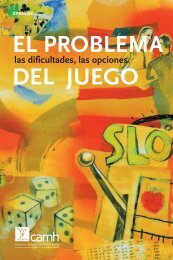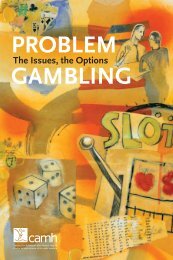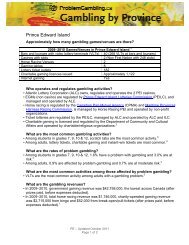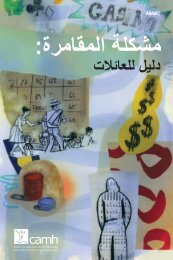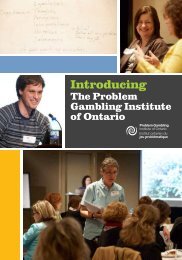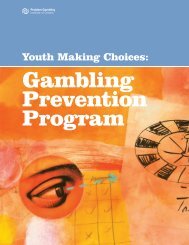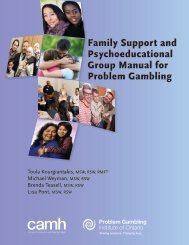Problem Gambling: A Guide for Helping Professionals
Problem Gambling: A Guide for Helping Professionals
Problem Gambling: A Guide for Helping Professionals
You also want an ePaper? Increase the reach of your titles
YUMPU automatically turns print PDFs into web optimized ePapers that Google loves.
<strong>Problem</strong> <strong>Gambling</strong>: A <strong>Guide</strong> <strong>for</strong> <strong>Helping</strong> <strong>Professionals</strong><br />
<strong>Gambling</strong> problems occur along a continuum. These are not discrete<br />
categories but possible points along a range of involvement.<br />
No Casual Serious Harmful Pathological<br />
<strong>Gambling</strong> Social Social Involvement <strong>Gambling</strong><br />
• No gambling: Some people never gamble.<br />
• Casual social gambling: Most people gamble casually, buying the<br />
occasional raffle or lottery ticket or occasionally visiting a casino <strong>for</strong><br />
entertainment.<br />
• Serious social gambling: These people play regularly. It is their main<br />
<strong>for</strong>m of entertainment, but it does not come be<strong>for</strong>e family and work.<br />
• Harmful involvement: These people are experiencing difficulties in<br />
their personal, work and social relationships.<br />
• Pathological gambling: For a small but significant number of people,<br />
gambling seriously harms all aspects of their lives. People with gambling<br />
problems this severe are unable to control the urge to gamble, despite<br />
the harm it causes. These people are more likely to use gambling to<br />
escape from problems and to get relief from anxiety.<br />
Pathways into <strong>Problem</strong> <strong>Gambling</strong><br />
This model was developed by Alex Blaszczynski to describe an integrated<br />
approach to understanding the entryways into problem gambling. More<br />
detailed in<strong>for</strong>mation can be found in his book, Overcoming Compulsive<br />
<strong>Gambling</strong> (1998). This approach takes into account the fact that not<br />
everyone who develops a gambling problem exhibits dsm-iv criteria,<br />
nor do they necessarily have an underlying or contributing pathology.<br />
People with gambling problems fall into three main categories.<br />
14




